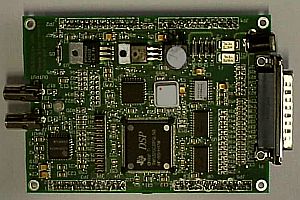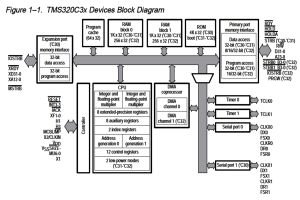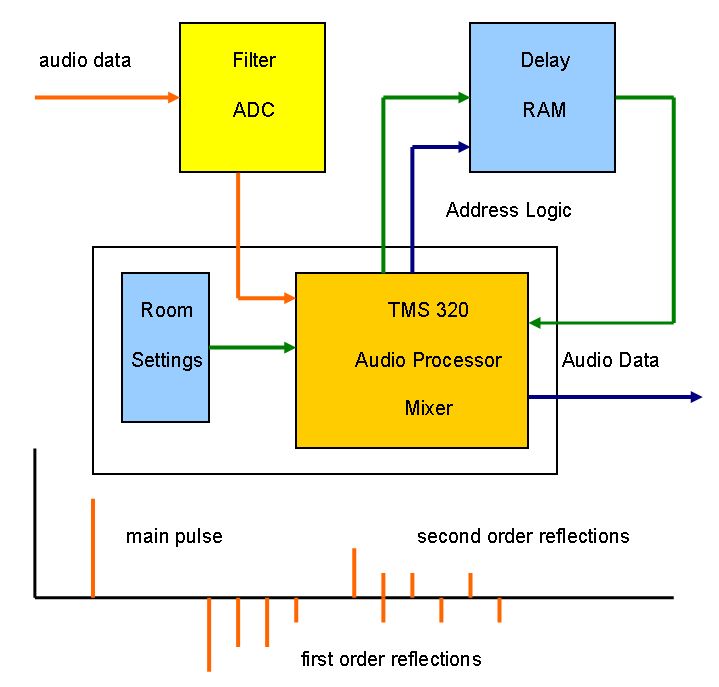| 96 kHz.org |
| Advanced Audio Recording |
|
Introduction to Echo Cancelling In modern music and recording studios, there is always the problem of disturbing reflections of the primary sound source created by walls, the floor and the ceiling. Certain reflections do accumulate to steady waves causing an unbalanced sound field making it hard to judge the true sound of a recording. To lower this problem a DSP can be used to analyze the reflections and introduce a compensation signal with inverted phase to null the reflection possibly.
The technique of echo cancelling in order to obtain a more clear signal is known from various applications in industrial signal processing. Last but not least, one can observe this at it's very best with internet data, where nowadays 100MBit most probably would not be possible to achieve without echo treatment.
In 1997 I had done some tests with my Texas Instruments TMS320 system, which was also used for my other audio applications. Nowadays a high speed DSP system is able to reduce reflections in video streams, so for the slow audio signals and their reflections this should be easily possible with current DSPs. The "only" 44100 samples per second require a resolution of about 10us - typically delays of 1ms to 30ms will have to be handled. At first glance, the only problem seems to be the RAM. A simple program was developed to capture the incoming data from an omni microphone and apply some sort of equalizer to measure the attenuation over distance and delay the signal appropriately for inverted playback. To distinguish the incoming sound from the reproduced sound, another microphone was introduced to perform a common mode analysis with the delayed signal and control an autocorrelation filter. In this way, the echo of the echo was also removed from the primary echo, so as not to cause a kind of delay loop that leads to unwanted reverberation effects.
Signal treatment chain of the echo cancelling algorithm. Delays are adjusted according to mic position and wall distances.
Silencing a Mixing Room by Echo Cancelling The subsequent logical step is to eliminate more than one reflection at different positions in a room making it possible to silence mixing rooms. Concentration has to be done on taking the characteristics of the used microphones into account in terms of the applied equalizer settings. The wall's reflections have to be pre calculated and in inverted way sent into the echo chain. A room analysis helps to gain the reflections of the given walls. In this example: 6 walls are removed: echo treament.wma
Conclusion and Summary DSPs can be used to lower the problem of reflections during recording situations and also mixing.
See the former article about Echo Treatment
You may also want to have a look at the article Studio Design
|
| © 2004 J.S. |


